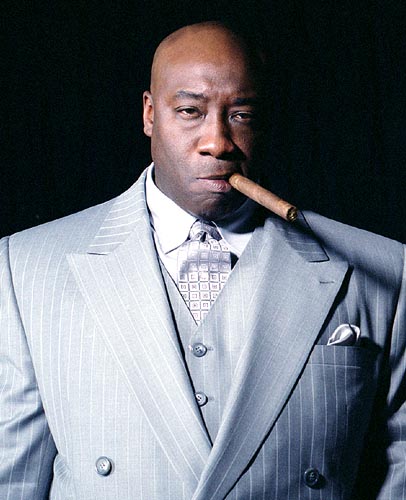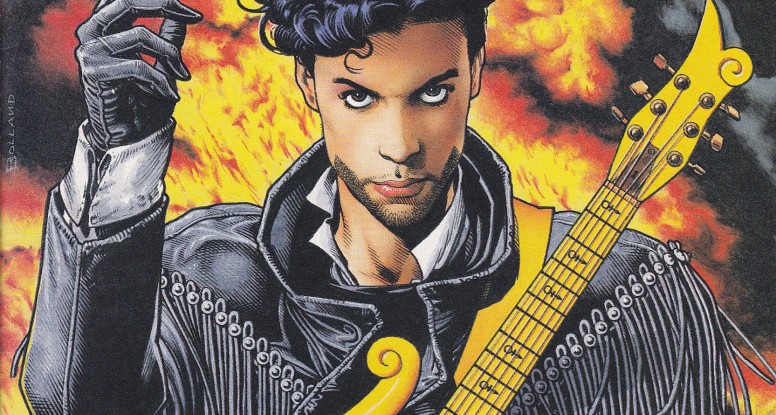In The Amazing Spider-Man 2, actor Jamie Foxx plays Max Dillon, a dorky genius, uncomfortable in his own skin, locked out of enjoying the fruits of his own labor at science technology company Oscorp by supervisors who belittle him. But after a horrific lab accident – as is often the case in comic books – Foxx’s body and mind change. Falling into an oversized fish tank, shocked by cables, wires, and eel; his left for dead body morphs into one with the ability to project, absorb, and manipulate electricity with deadly precision.
For men of color, it is easy to relate and see how Foxx’s intense portrayal of Electro is indicative of the black male mindset in corporate America. He’s a brother who has been used for his genius by corporate higher ups, but lacks the voice and power to stand up for himself. But as the film role is quickly reversed from nerd to twisted, power-hungry villain, the birth of Electro brings him control over life and death. A lambasted black man who is suddenly given a superpower where he can get even with his former oppressors? Sounds like something straight out of a Tea Party member’s nightmare.

Electro, who was first introduced to The Amazing Spider-Man #9 in 1964, wasn’t the only brother who’d had a similar issue with “the man.” Thunderbolt of the Wrecking Crew, who first appeared in 1974’s Defenders Vol. 1. #17 was often called Marvel’s Black Bruce Banner, because of his genius-level intellect in the field of gamma radiation study. He turned bad because his scientific discovery was stolen by corporate higher ups.
But just as in life, the sensibilities of bad guys are seldom as simple as black and white. African-American characters as a whole first began to proliferate in Marvel and DC Comics in the late 60s. Their sensibilities, as penned by white writers who initially struggled to carve out a niche for comic book characters of African descent, were socially-motivated and reflected the turbulent times from which they were spawned. The Black Panther and Power-Man were among the first super heroes of African descent. But there were many obscure black villains and anti-heroes created around them with some storylines that were flat out racist.
Black Panther’s archenemy was Man-Ape. He first appeared in Avengers #62 (1969) and gets his powers from bathing in blood and eating the flesh of the white gorilla, giving him superhuman strength and agility from the transformation. A large black man, in a white gorilla suit, juxtaposed against the racist idea of black men behaving savagely and looking like apes sounds more than a little bit racist.

Man-Ape
A full year before DC Comic’s first black super hero Black Lightning came in 1977, the comic company published a story featuring its first black villain or anti-hero – depending upon your point of view. His name was Tyroc. Aside from his rather hip hop sounding moniker, Tyroc first appeared in Superboy #216 in 1976. He was a former slave turned racial separatist who lived in the 30th and 31st centuries. It was a time where all black people in the world had exiled themselves to an inter-dimensional island off the coast of Africa. Tyroc’s power was his voice, which emitted power blasts with the ability to among other things – destroy, teleport, and fly. So, a black man living on an island of black people off the coast of Africa whose powerful voice is his superpower?
Okay. When he rocks the mic, he rocks the mic right, huh?
In the 2003 book The Legion Companion by Glen Cadigan, pages revealed that Jim Shooter, one of DC’s artists in the 70s (a white guy) was repeatedly shot down in his attempts to create a good, well thought out African-American hero. In the book, Shooter called the depiction of Tyroc, “pathetic and appalling.” While co-creator Mike Grell (another white guy) described his back story as, “possibly the most racist concept I’ve ever heard in my life.”
These days, both Marvel Comics and DC have become far better at both illustrating black villains and creating backstories that don’t make you want to run and immediately call your local civil rights activist. Although it seems that television producers and directors of science fiction films have never had a problem in adding African-American characters. With the exponential growth of films and television series based upon comic book characters, many of our favorite stars have graced the silver screen while providing delightfully diabolical renditions of some of the greatest comic book villains of all time.
In the Marvel Universe, the Kingpin has fought Daredevil and Spider-Man, among many other heroes. Running the criminal rackets of the underworld as the undisputed boss of bosses, Kingpin was created in 1967. At the time, the face of organized crime was considered to be Italian in popular culture with the Five Families of La Cosa Nostra still running things on the East Coast. Late actor Michael Clarke Duncan played Kingpin aka Wilson Fisk alongside Ben Affleck in 2003’s Daredevil. Though the film was largely panned by comic book fans and movie critics, Duncan played a perfect Kingpin with his menacing size and sinister grin.

Michael Clarke Duncan as The Kingpin
In 2004 Academy Award-winning actress Halle Berry tried her hand at being the bad guy in Cat-Woman. The borderline vigilante/ master burglar and all-times sex-pot Selina Kyle has qualities that may be considered stereotypically black – exotic and sassy. However, Cat-Woman is depicted as a white woman in the comic book version. But Eartha Kitt’s classic feminine feline rendition in the campy and kooky ‘60s Batman television series is considered by many as the best of all-time, even better than the Michelle Pfieffer version as seen in the1992 film version of Batman Returns.
And let’s not forget to mention the contributions of the great James Earl Jones to the comic book film genre. He played nefarious Thulsa Doom in the 1982 cult classic Conan the Barbarian starring Arnold Schwarzenegger.
In the new millennium comic books, and film by proxy, African-American villains have become increasingly more powerful and less reliant on some white benefactor. Actress Jada Pinkett Smith has been tabbed to play clairvoyant gangland boss, Fish, in the upcoming Batman prequel series Gotham. A refreshing, groundbreaking take, how many female mob bosses have we seen on the television screen?
Villains of African descent have grown, becoming more powerful and relevant since the 1960s civil rights era. Real world dichotomies boil over to the surface as the writers, readers and viewers of the comic book genres struggle to expand their minds as to what it truly means to be super-powered and black in America. These are questions that we continually struggle to answer in reality and throughout the colorful pages of today’s comic books and movies. Once again, art imitates life.


